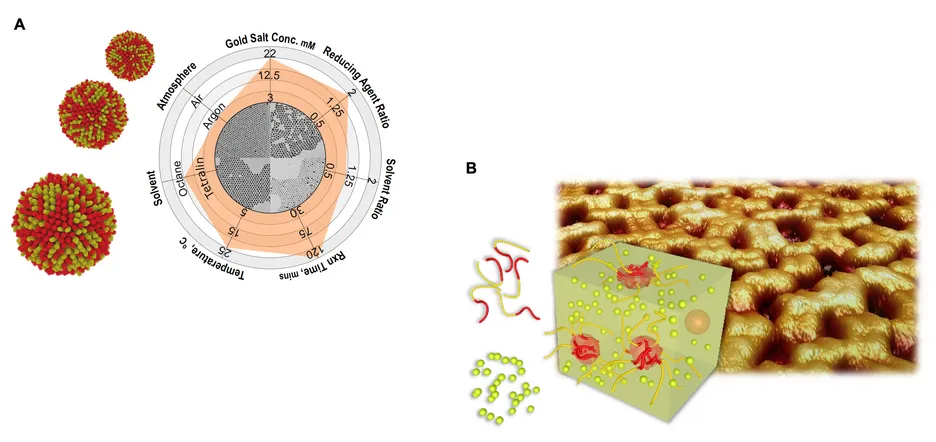Colloidal Design and Molecular Self-Assembly

Molecular self-assembly is a core strategy in our research for creating complex soft matter. Detailed control over the composition and interactions of nanoscale components allows us to encode specific structural features into the material. Rational colloid and interface engineering requires precise control of the building blocks involved. In our work, these building blocks range from inorganic nanoparticles (NPs) and macromolecules like block copolymers (BCPs) to biological molecules. By tuning interactions among these components, we direct the formation of colloidal architectures with tailored properties.
We develop modular synthetic platforms for colloidal building blocks, combining capabilities in ligand and polymer synthesis with combinatorial chemistry and automation. For example, we created a two-step method to synthesise gold nanoparticles with independent control over core size (2–7 nm) and surface functionality via ligand exchange. This decoupling enables systematic creation of colloidal libraries with tailored properties. Automated synthesis allows us to generate hundreds of distinct samples for high-throughput studies. To optimise these multivariate systems, we use statistical Design of Experiments (DoE), which efficiently explores parameter space and uncovers interactions that traditional methods may miss. This data-driven approach accelerates discovery and supports the establishment of clear structure–function relationships.
Our group has also developed a range of block copolymer (BCP) assembly strategies, which we use to direct the formation of nanostructured materials with tunable morphologies. These include thin films and 3D architectures with periodic features in the 10–100 nm range. Through solvent annealing, interfacial control, and selective etching or infiltration, we create model porous architectures that serve as platforms for transport studies, selective adsorption, sensing, or templating other materials.